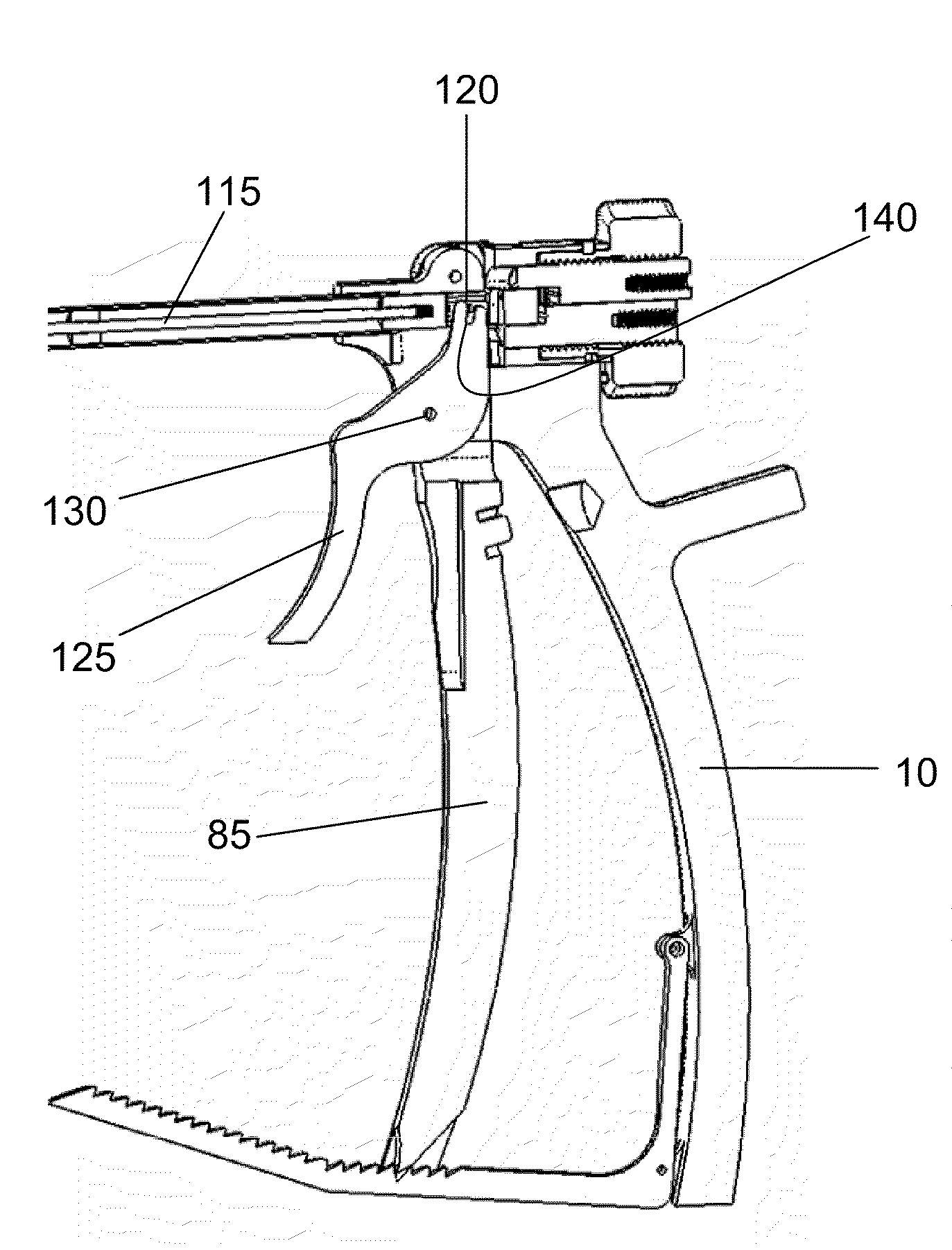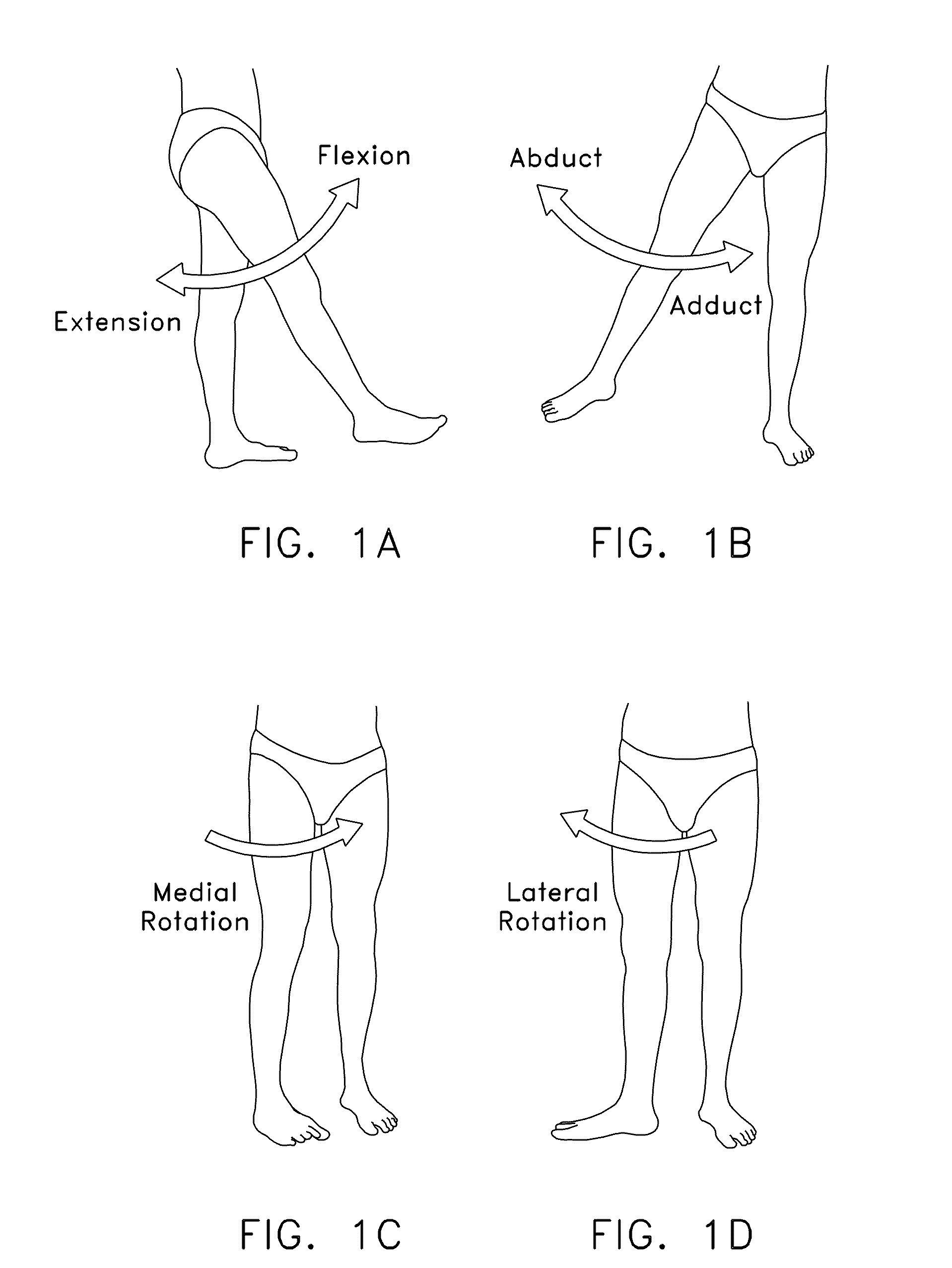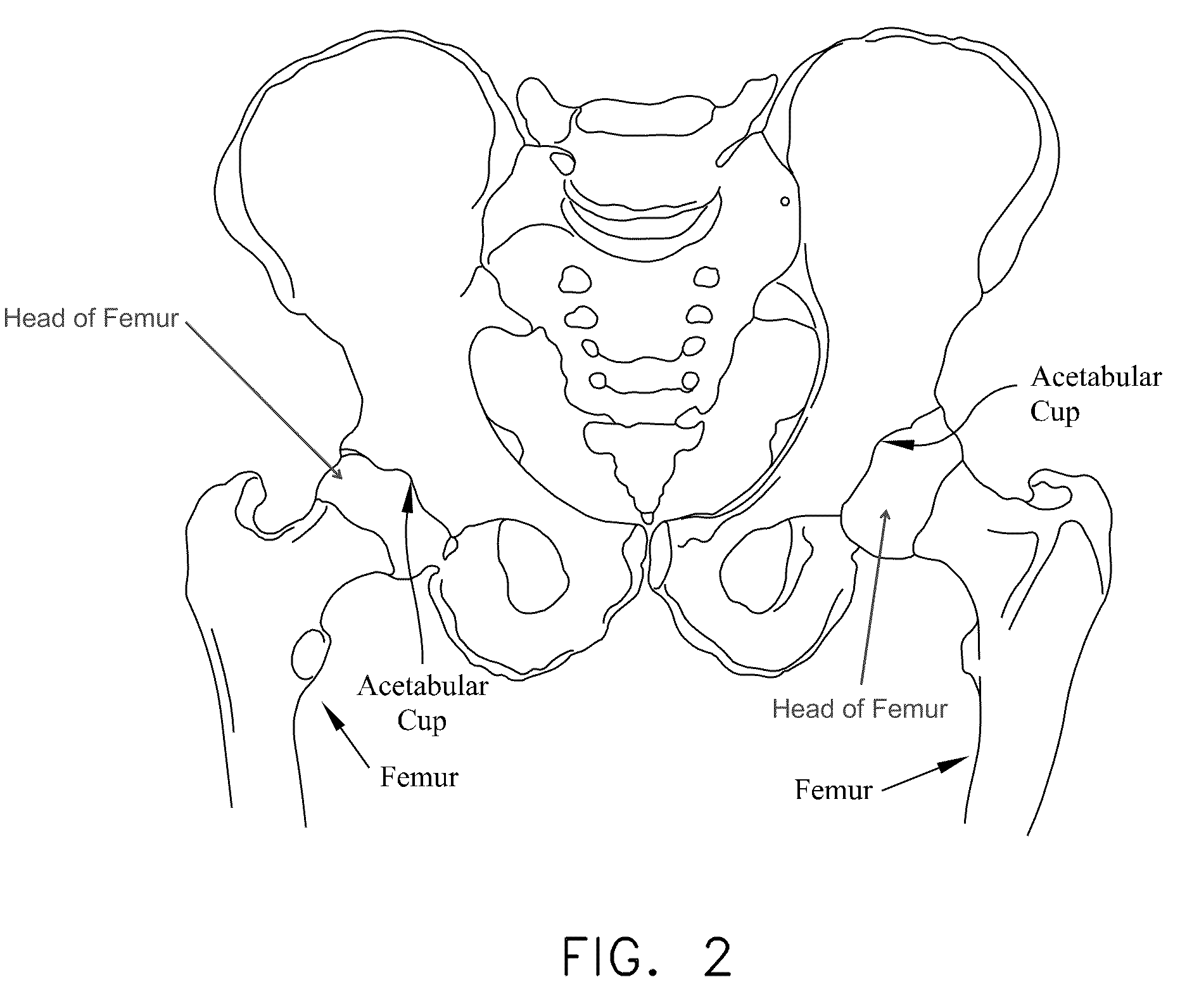In other cases, the
pathology may be minor at the outset but, if left untreated, may worsen over time.
A number of procedures have been developed for treating hip pathologies short of partial or
total hip replacement, but these procedures are generally limited in scope due to the significant difficulties associated with treating the hip joint.
In some cases, and looking now at FIG. 13, this impingement can occur due to irregularities in the geometry of the
femur.
In other cases, and looking now at FIG. 14, the impingement can occur due to irregularities in the geometry of the acetabular cup.
Impingement can result in a reduced
range of motion, substantial pain and, in some cases, significant deterioration of the hip joint.
Defects of this type sometimes start fairly small but often increase in size over time, generally due to the dynamic nature of the hip joint and also due to the weight-bearing nature of the hip joint.
Articular defects can result in substantial pain, induce and / or exacerbate arthritic conditions and, in some cases, cause significant deterioration of the hip joint.
More particularly, in many cases, an accident or sports-related injury can result in the labrum being torn away from the rim of the acetabular cup, typically with a tear running through the body of the labrum.
These types of injuries can be very painful for the patient and, if left untreated, can lead to substantial deterioration of the hip joint.
As a result, it is relatively difficult for surgeons to perform minimally-invasive procedures on the hip joint.
This
limited access further complicates effectively performing minimally-invasive procedures on the hip joint.
In addition to the foregoing, the nature and location of the pathologies of the hip joint also complicate performing minimally-invasive procedures on the hip joint.
This makes drilling into bone, for example, significantly more complicated than where the angle of approach is effectively aligned with the angle at which the instrument addresses the tissue, such as is frequently the case in the
shoulder joint.
Furthermore, the
working space within the hip joint is typically extremely limited, further complicating repairs where the angle of approach is not aligned with the angle at which the instrument addresses the tissue.
As a result of the foregoing, minimally-invasive hip joint procedures are still relatively difficult to perform and relatively uncommon in practice.
Consequently, patients are typically forced to manage their hip pain for as long as possible, until a resurfacing procedure or a partial or
total hip replacement procedure can no longer be avoided.
These procedures are generally then performed as a highly-invasive, open procedure, with all of the disadvantages associated with highly-invasive, open procedures.
However, due to the
anatomy of the hip joint and the pathologies associated with the same, hip
arthroscopy is currently practical for only selected pathologies and, even then, hip
arthroscopy has generally met with limited success.
Unfortunately, current methods and apparatus for arthroscopically re-attaching the labrum are somewhat problematic.
Unfortunately, it can be difficult to arthroscopically pass suture through the labrum in a manner which facilitates re-attaching the labrum to the
acetabulum.
This is due to space limitations within the hip joint, the angle of approach into the hip joint, the nature of the labral tissue, the position of the labrum within the hip joint, etc.
This thinness presents a problem when passing suture through the labrum, since it is generally desirable to pass the suture through the labrum so that the suture does not open on the
articular surface of the labrum, in order to prevent abrasion during joint motion.
Unfortunately, current arthroscopic approaches for the repair of the labrum generally “lasso” or encircle the labrum with a loop of suture, which leaves a portion of the suture loop protruding through the articulating side of the labrum, where it may contact and abrade the
articular cartilage on the head of the
femur.
Another problem with current techniques for repairing the labrum relates to the anatomical position of the repair itself.
Such
bone anchor placement is less than ideal, since it generally results in the labrum being drawn away from the joint, thereby complicating proper anatomical repair.
However, this can be difficult to achieve arthroscopically within the hip joint.
 Login to View More
Login to View More  Login to View More
Login to View More 


